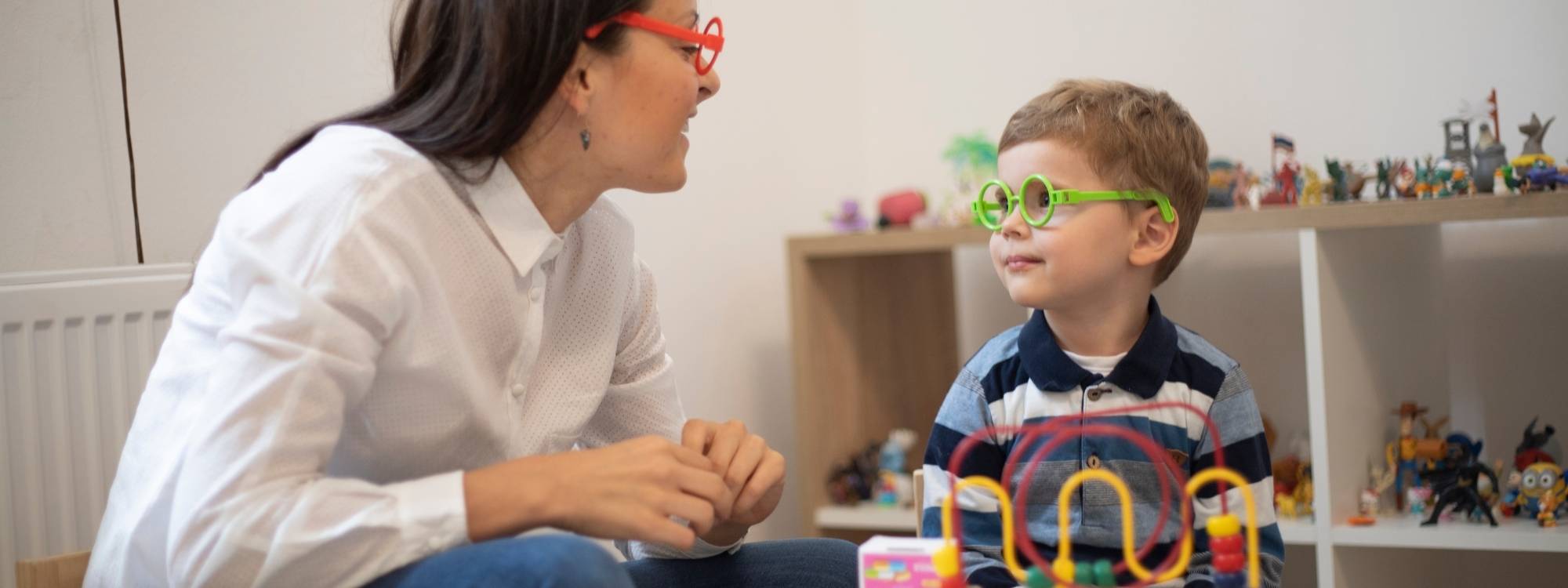How Is Autism Diagnosed: Criteria and Tools
Autism Spectrum Disorder (ASD) is a complex neurodevelopmental condition that affects how individuals interact with others, communicate, and process sensory information. Since autism presents differently in each individual, diagnosing it requires a thorough evaluation of a child’s development, social communication skills, and behavioral patterns. A proper diagnosis allows children and adults to access early intervention services, therapies, and educational support tailored to their specific needs. Let’s dive into the topic: How Is Autism Diagnosed?
Unlike other medical conditions, there is no single medical test, such as a blood test or brain scan, that can diagnose autism. Instead, health care professionals rely on behavioral observations, standardized diagnostic tools, and input from caregivers to make an informed diagnosis. This is a rigorous process that involves multiple screenings and evaluations to ensure accuracy.
This guide provides a step-by-step breakdown of the autism diagnostic process, detailing the diagnostic criteria, commonly used screening tools, and what families and individuals can expect. Whether you’re a parent, caregiver, or an adult seeking answers, understanding how autism is diagnosed can help you navigate the next steps. This information can also help reduce anxiety about the process, providing clarity on what to expect.
Understanding Autism Diagnosis
Autism Spectrum Disorder is classified as a neurodevelopmental disorder that primarily affects social interaction, verbal and nonverbal communication, and repetitive patterns of behavior. Because autism exists on a spectrum, it varies significantly from person to person, making diagnosis more complex. Some individuals show clear signs early in life, while others may not be diagnosed until adolescence or adulthood.
Early diagnosis is crucial because early intervention therapies can help improve communication, behavior, and life skills. The American Psychiatric Association recognizes autism under the Diagnostic and Statistical Manual of Mental Disorders, Fifth Edition (DSM-5), which provides the criteria used to diagnose the condition. This standardized approach ensures that individuals receive accurate assessments and proper support.
Autism is typically diagnosed in early childhood, but many individuals, particularly those with milder symptoms or females, may not receive a diagnosis until later in life. The diagnostic process involves multiple steps, including developmental screenings, formal evaluations, and assessments by specialists such as a developmental pediatrician, child psychologist, or neurologist. The earlier a diagnosis is made, the sooner an individual can access services that support their unique needs.
Autism Diagnosis Criteria – DSM-5 Guidelines
The DSM-5 outlines the core diagnostic criteria used by clinicians when assessing individuals for autism. To be diagnosed with autism, an individual must exhibit persistent deficits in social communication and interaction, along with restricted or repetitive behaviors, interests, or activities. These behaviors must be present in early childhood, though they may not fully manifest until later when social demands increase.
Core Diagnostic Criteria for Autism
- Social Communication Impairments:
- Difficulty engaging in social emotional reciprocity (e.g., limited back-and-forth conversations or difficulty sharing emotions).
- Poorly integrated verbal and nonverbal communication (e.g., reduced facial expressions, lack of eye contact, or abnormal gestures).
- Trouble forming and maintaining relationships with other family members, peers, or caregivers.
- Repetitive Patterns of Behavior:
- Engaging in repetitive motor movements, speech, or use of objects (e.g., hand-flapping, lining up toys, echolalia).
- Insistence on rigid thinking patterns, routines, or rituals (e.g., distress when routines are changed).
- Strong, fixated interests in specific topics, objects, or activities.
- Hyper- or hypo-reactivity to sensory aspects of the environment (e.g., aversion to loud sounds, fascination with lights or spinning objects).
- Symptoms Must Be Present in Early Childhood:
- While some behaviors may not become fully evident until social demands increase, signs must have been present in the early developmental period.
- Symptoms Must Cause Clinically Significant Impairment:
- The child’s behavior must interfere with daily functioning in multiple contexts, such as school, home, and social settings.
- Symptoms Must Not Be Better Explained by Another Condition:
- Autism symptoms should not be solely attributed to an intellectual disability, global developmental delay, or another pervasive developmental disorder.
Autism Screening and Diagnostic Tools
Diagnosing autism involves multiple standardized screening tools and formal evaluations to assess an individual’s cognitive, social, and behavioral development. These assessments are conducted by trained health care professionals to ensure an accurate diagnosis.
Step 1 – Developmental Screening
Developmental screenings are conducted during routine well-child visits by a primary care provider or pediatrician to assess whether a child is meeting age-appropriate developmental milestones. These screenings often include:
- M-CHAT (Modified Checklist for Autism in Toddlers): A 20-question parent-completed questionnaire that helps identify children at risk for autism.
- CSBS (Communication and Symbolic Behavior Scales): A tool used to assess a child’s communication, gestures, and play behaviors.
Step 2 – Comprehensive Diagnostic Evaluations
If concerns arise during screening, a specialist such as a child psychologist or developmental pediatrician conducts a comprehensive evaluation. This includes:
- Autism Diagnostic Observation Schedule (ADOS-2): A structured play-based assessment where a clinician observes a child’s social communication, behaviors, and interactions.
- Autism Diagnostic Interview-Revised (ADI-R): A parent interview assessing early developmental behaviors.
- Childhood Autism Rating Scale (CARS): A 15-item rating system used by clinicians to determine autism severity.
These tools help clinicians determine whether a child meets the diagnostic criteria for autism spectrum disorder.
Challenges in Diagnosing Autism
Despite advancements in screening, diagnosing autism can be challenging due to several factors:
- Variability in Symptoms: No two individuals with autism exhibit the same behaviors.
- Gender Differences: Many females with autism mask symptoms or display less overt behaviors, leading to underdiagnosis.
- Overlap with Other Conditions: Symptoms of autism often resemble those of ADHD, sensory processing disorder, or speech delays.
Because of these challenges, many children remain undiagnosed or misdiagnosed for years. Delayed diagnosis can result in missed early intervention opportunities, impacting a child’s development and future success.
Conclusion
Understanding how autism is diagnosed is the first step in accessing the right support and interventions. Early diagnosis allows individuals to receive appropriate therapies, educational support, and accommodations tailored to their needs. If you suspect autism in yourself or a loved one, seeking an evaluation from a qualified autism specialist or developmental pediatrician can provide valuable answers and resources. Taking action early can significantly improve long-term outcomes and overall quality of life.
Concerned about your child’s development or looking for expert autism diagnostic support? Champions ABA provides professional evaluations and personalized therapy plans to help families navigate the diagnosis process with confidence. Call (877) 242-1744 or visit our website today to learn more about our comprehensive autism services.
FAQs
How is autism officially diagnosed?
Autism is diagnosed through a combination of behavioral assessments, clinical interviews, and standardized screening tools. Health care professionals evaluate a child’s developmental history and behaviors based on the DSM-5 criteria to determine whether they meet the threshold for an autism diagnosis. This process typically involves structured observations, parental interviews, and specialized diagnostic tests to ensure an accurate assessment.
What are the top five signs of autism?
The most common signs of autism include difficulties with social interaction, such as limited eye contact and struggles with engaging in conversations. Delayed verbal and nonverbal communication, including challenges in using gestures and facial expressions, is also a key indicator. Additionally, repetitive behaviors, a strong preference for routines, and unusual reactions to sensory stimuli, such as hypersensitivity to sounds or textures, are often observed in individuals with autism.
How do doctors test if you have autism?
Doctors use specialized diagnostic tools like the Autism Diagnostic Observation Schedule (ADOS-2) and the Autism Diagnostic Interview-Revised (ADI-R) to evaluate social interaction, communication skills, and repetitive behaviors. These assessments involve structured activities and parental input to assess the individual’s behavioral patterns and developmental history. Since there is no medical test, such as a blood test, for autism, diagnosis relies on expert clinical judgment based on observed symptoms and standardized evaluation methods.
What are the five criteria for autism?
The DSM-5 outlines five criteria that must be met for an autism diagnosis, starting with persistent deficits in social communication and interaction across multiple contexts. Restricted and repetitive patterns of behavior, interests, or activities must also be present, including repetitive motor movements or a strong need for routines. Additionally, symptoms must appear in early childhood, cause clinically significant impairment in daily functioning, and cannot be better explained by another disorder, such as an intellectual disability or global developmental delay.



